Multifaceted Regulation of ALDH1A1 by Cdk5 in Alzheimer's Disease Pathogenesis
- PMID: 29948941
- PMCID: PMC6368892
- DOI: 10.1007/s12035-018-1114-9
Multifaceted Regulation of ALDH1A1 by Cdk5 in Alzheimer's Disease Pathogenesis
Abstract
This study revealed multifaceted regulation of ALDH1A1 by Cdk5 in Alzheimer's disease (AD) pathogenesis. ALDH1A1 is a multifunctional enzyme with dehydrogenase, esterase, and anti-oxidant activities. ALDH1A1 is also a major regulator of retinoic acid (RA) signaling, which is critical for normal brain homeostasis. We identified ALDH1A1 as both physiological and pathological target of Cdk5. First, under neurotoxic conditions, Cdk5-induced oxidative stress upregulates ALDH1A1 transcription. Second, Cdk5 increases ALDH1A1 levels by preventing its ubiquitylation via direct phosphorylation. Third, ALDH1A1 phosphorylation increases its dehydrogenase activity by altering its tetrameric state to a highly active monomeric state. Fourth, persistent oxidative stress triggered by deregulated Cdk5 inactivates ALDH1A1. Thus, initially, the good Cdk5 attempts to mitigate ensuing oxidative stress by upregulating ALDH1A1 via phosphorylation and paradoxically by increasing oxidative stress. Later, sustained oxidative stress generated by Cdk5 inhibits ALDH1A1 activity, leading to neurotoxicity. ALDH1A1 upregulation is highly neuroprotective. In human AD tissues, ALDH1A1 levels increase with disease severity. However, ALDH1A1 activity was highest at mild and moderate stages, but declines significantly at severe stage. These findings confirm that during the initial stages, neurons attempt to upregulate and activate ALDH1A1 to protect from accruing oxidative stress-induced damage; however, persistently deleterious conditions inactivate ALDH1A1, further contributing to neurotoxicity. This study thus revealed two faces of Cdk5, good and bad in neuronal function and survival, with a single substrate, ALDH1A1. The bad Cdk5 prevails in the end, overriding the good Cdk5 act, suggesting that Cdk5 is an effective therapeutic target for AD.
Keywords: ALDH1A1; Alzheimer’s disease; Cdk5; Chemical genetic; Neurodegeneration; Neuroprotection.
Conflict of interest statement
Figures
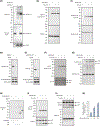
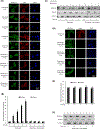
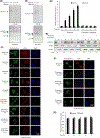
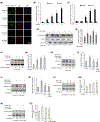
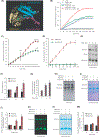
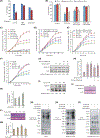
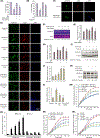
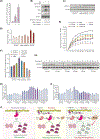
Similar articles
-
Cdk5-Foxo3 axis: initially neuroprotective, eventually neurodegenerative in Alzheimer's disease models.J Cell Sci. 2016 May 1;129(9):1815-1830. doi: 10.1242/jcs.185009. Epub 2016 Mar 9. J Cell Sci. 2016. PMID: 28157684 Free PMC article.
-
Deregulated Cdk5 promotes oxidative stress and mitochondrial dysfunction.J Neurochem. 2008 Oct;107(1):265-78. doi: 10.1111/j.1471-4159.2008.05616.x. Epub 2008 Aug 9. J Neurochem. 2008. PMID: 18691386
-
The Cdk5-Mcl-1 axis promotes mitochondrial dysfunction and neurodegeneration in a model of Alzheimer's disease.J Cell Sci. 2017 Sep 15;130(18):3023-3039. doi: 10.1242/jcs.205666. Epub 2017 Jul 27. J Cell Sci. 2017. PMID: 28751497 Free PMC article.
-
Deregulated Cdk5 activity is involved in inducing Alzheimer's disease.Arch Med Res. 2012 Nov;43(8):655-62. doi: 10.1016/j.arcmed.2012.10.015. Epub 2012 Nov 7. Arch Med Res. 2012. PMID: 23142263 Free PMC article. Review.
-
The Role of Cdk5 in Alzheimer's Disease.Mol Neurobiol. 2016 Sep;53(7):4328-42. doi: 10.1007/s12035-015-9369-x. Epub 2015 Jul 31. Mol Neurobiol. 2016. PMID: 26227906 Review.
Cited by
-
Capturing biomarkers associated with Alzheimer disease subtypes using data distribution characteristics.Front Comput Neurosci. 2024 Sep 3;18:1388504. doi: 10.3389/fncom.2024.1388504. eCollection 2024. Front Comput Neurosci. 2024. PMID: 39309755 Free PMC article.
-
CDK5: an oncogene or an anti-oncogene: location location location.Mol Cancer. 2023 Nov 23;22(1):186. doi: 10.1186/s12943-023-01895-8. Mol Cancer. 2023. PMID: 37993880 Free PMC article. Review.
-
The role of Cdk5 in neurological disorders.Front Cell Neurosci. 2022 Jul 28;16:951202. doi: 10.3389/fncel.2022.951202. eCollection 2022. Front Cell Neurosci. 2022. PMID: 35966199 Free PMC article. Review.
-
ALDH1A1 in Cancers: Bidirectional Function, Drug Resistance, and Regulatory Mechanism.Front Oncol. 2022 Jun 22;12:918778. doi: 10.3389/fonc.2022.918778. eCollection 2022. Front Oncol. 2022. PMID: 35814382 Free PMC article. Review.
-
Identification and Verification of the Ability of Cdk5 to Phosphorylate Deubiquitinating Enzyme BRCC3 In Vitro.Bull Exp Biol Med. 2022 Apr;172(6):701-708. doi: 10.1007/s10517-022-05460-z. Epub 2022 May 3. Bull Exp Biol Med. 2022. PMID: 35503584
References
-
- Goncalves MB, Clarke E, Hobbs C, Malmqvist T, Deacon R, Jack J, Corcoran JP (2013) Amyloid β inhibits retinoic acid synthesis exacerbating Alzheimer disease pathology which can be attenuated by an retinoic acid receptor α agonist. Eur J Neurosci 37(7):1182–1192. 10.1111/ejn.12142 - DOI - PMC - PubMed
-
- Kawahara K, Suenobu M, Ohtsuka H, Kuniyasu A, Sugimoto Y, Nakagomi M, Fukasawa H, Shudo K et al. (2014) Cooperative therapeutic action of retinoic acid receptor and retinoid x receptor agonists in a mouse model of Alzheimer’s disease. J Alzheimers Dis 42(2):587–605. 10.3233/JAD-132720. - DOI - PubMed
MeSH terms
Substances
Grants and funding
LinkOut - more resources
Full Text Sources
Other Literature Sources
Medical
Research Materials
Miscellaneous

